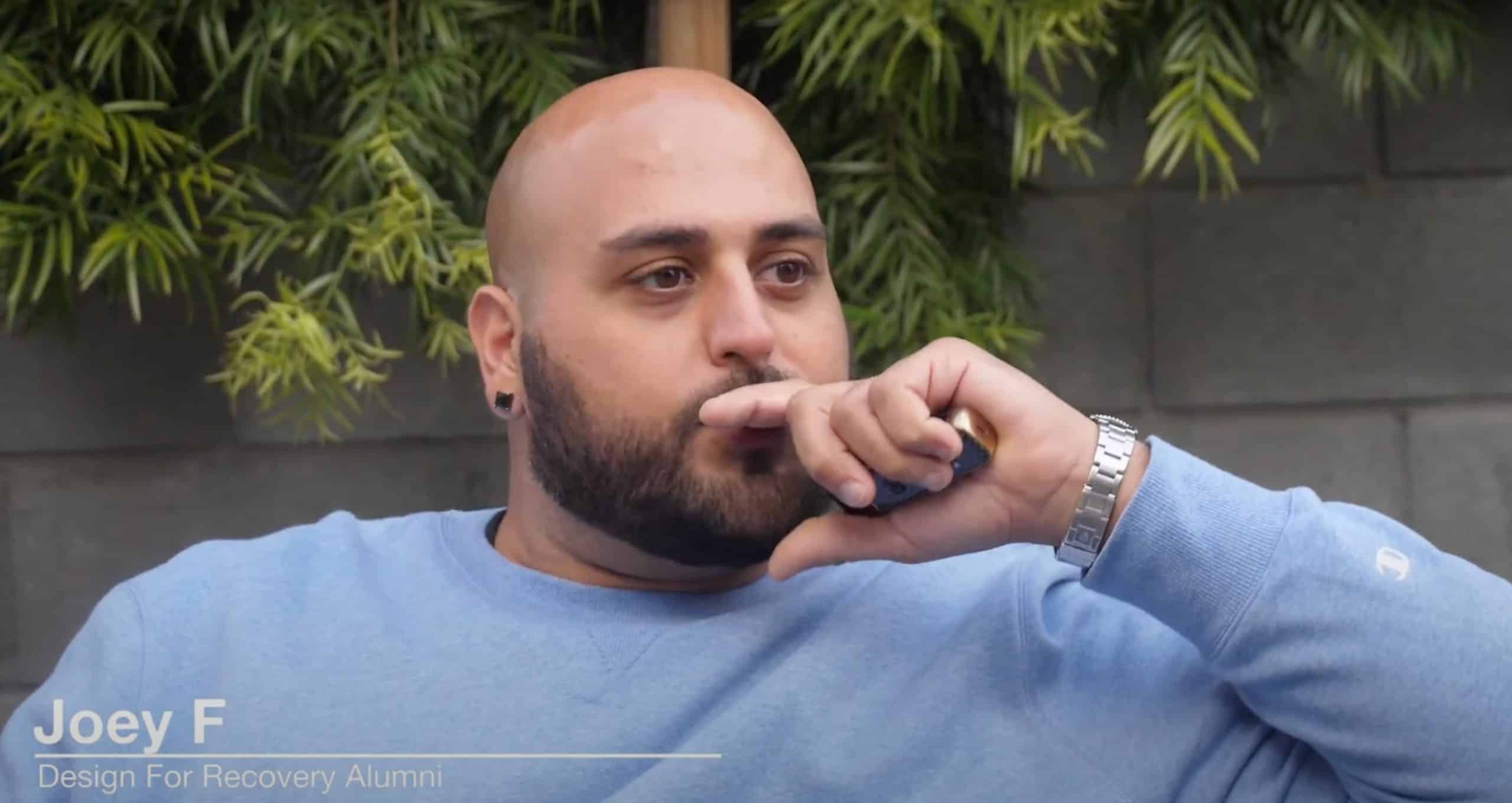A halfway house is a transitional living facility for individuals in the early stages of recovery from substance abuse. It offers a safe and supportive place where they can continue their recovery from addiction to drugs or alcohol after leaving inpatient treatment programs, federal prison, or the streets as a homeless person. In some cases, the court mandates an individual to stay in a halfway house.
Some people find it difficult to return home after rehab or prison time, especially those who live in a triggering environment or lack a strong support structure at home. As a result, these people stay either in a sober living home or a halfway house.
In this article, we’ll go through the different halfway house rules and regulations.
No Drugs or Alcohol Are Allowed
At halfway houses, there is a zero-tolerance policy regarding drugs and alcohol. Alcohol, drugs, and related paraphernalia are prohibited inside the home. This is because the person’s consumption of these substances will have a negative impact on the other residents, who may be going through a medical detox and healing process. However, prescription medications, such as antidepressants and anxiety medications, are exempt from this rule.
Some halfway houses require residents to sign a contract of agreement about the no drugs and alcohol policy and other typical rules before they commit to living inside the halfway house.
Residents Must Participate in Household Activities

All halfway house residents are expected to take part in routines such as household chores. Through daily chores, they can get re-acquainted with the fundamentals of functional life in a safe and structured setting. Incorporating chores into a regular routine is also one way to teach sobriety while preparing an individual for the mundane tasks of daily living. Laundry, meal preparation, doing the dishes, cleaning the house, gardening, and raking leaves are examples of such chores.
Every day, the house manager checks all the tasks. Chores that are not done or are disregarded may result in a fine. In some cases, residents may be denied access to certain privileges, such as phone calls to a loved one. Residents are responsible for keeping one another in check so that they won’t face these consequences.
While it’s natural to struggle a bit when first tasked with a new set of responsibilities, residents may ask for help from their peers if they cannot complete the cleaning tasks by themselves. They can also make a list of daily goals or a detailed itinerary so they will complete the task gradually. In addition, residents and the house manager can work out an arrangement that meets their needs. If residents tell them what they’re good at, managers can assign cleaning tasks within their capabilities.
Visiting Rules
Paying a visit to loved ones to offer them words of encouragement is a great way for families and friends to show them care and concern. Doing so can help track the resident’s recovery progress by checking in with the house manager or on-site counselors.
That being said, visitors are allowed in halfway houses at scheduled times. It is important to note that each halfway house will have its own set of regulations that visitors must abide by. Visiting regulations at halfway houses are primarily put in place for safety purposes. These regulations ensure that residents are not put in harm’s way by any substance or environment.
Visitation policies vary per halfway house, so it is advisable to call ahead and inquire about their restrictions before making a visit to a loved one.
Who Can Visit?
All visitors need to be at least 18 years old and show proper identification. Minors are permitted to visit the halfway house as long as they are accompanied by an adult (either a parent or a guardian). Overnight guests are typically forbidden at halfway houses.
Moreover, there is a limit on the number of visitors a resident is allowed to have at a given facility. Family members, close friends, and legal counsel are allowed to visit. In most houses, visitors need to be approved by the staff in advance, so calling ahead to set an appointment is imperative.
Residents are not allowed to have visitors who have an outstanding warrant, are on parole, or are otherwise deemed a security threat. Those with a history of drug trafficking, alcohol addiction, or criminal offense are not allowed entry.
All visitors are required to be sober and must have a presentable appearance. There are also special circumstances, such as emergency visits, where residents can later verify with the house manager to determine if their guests are permitted to visit.
Visitation Hours
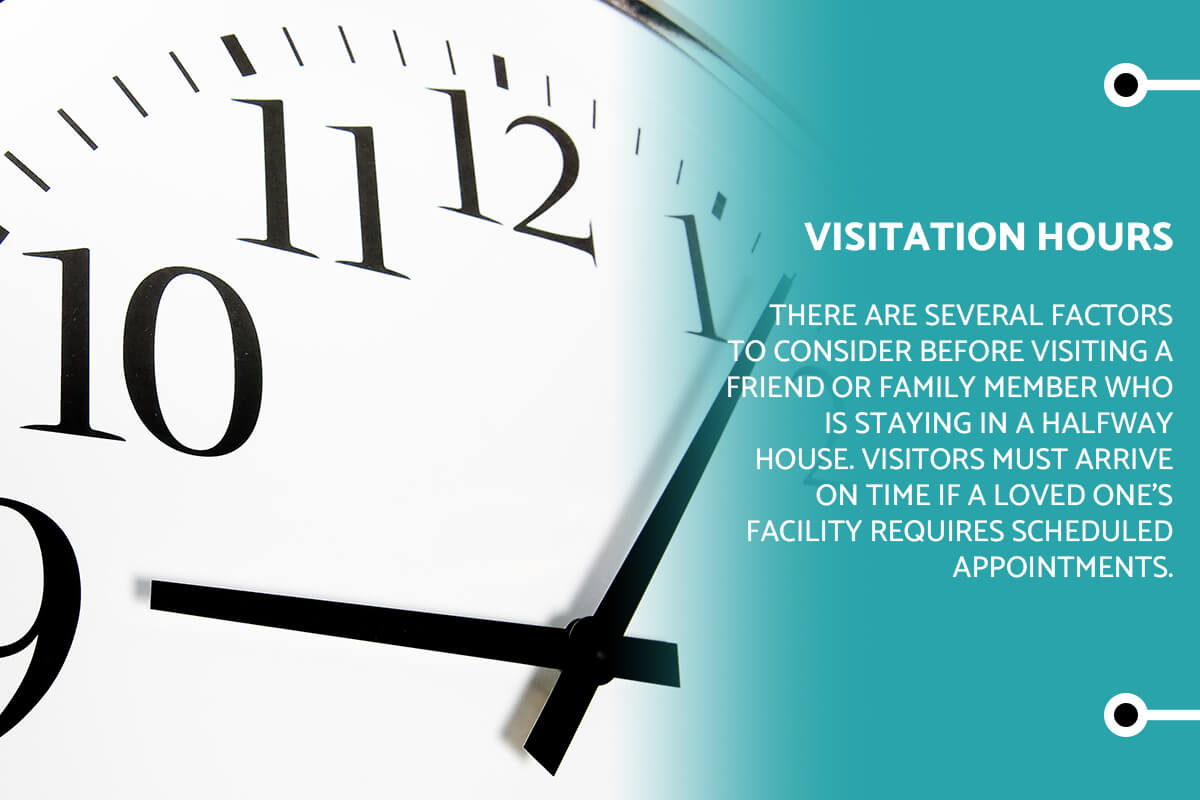
Most halfway houses have set visitation hours. Weekday visiting commonly takes place between 9 AM and 5 PM. Hours could be extended on the weekends. Halfway houses do not usually allow visitors for 24 hours a day. Depending on the halfway house, walk-in visits may be possible.
There are several factors to consider before visiting a friend or family member who is staying in a halfway house. Visitors must arrive on time if a loved one’s facility requires scheduled appointments. The residents keep themselves fairly occupied inside the house with daily activities and other program requirements. Thus, the visitor’s late arrival will likely affect the residents emotionally and impede their recovery.
In addition, visitors should not cancel a scheduled visit unless there is an emergency. The visitor’s absence may be upsetting and may cause triggers the resident if they were looking forward to seeing their family or friend, and they failed to show up. Visitors may need to coordinate their visits with their loved ones ahead of time with the assistance of the facility staff.
Items You Can Bring
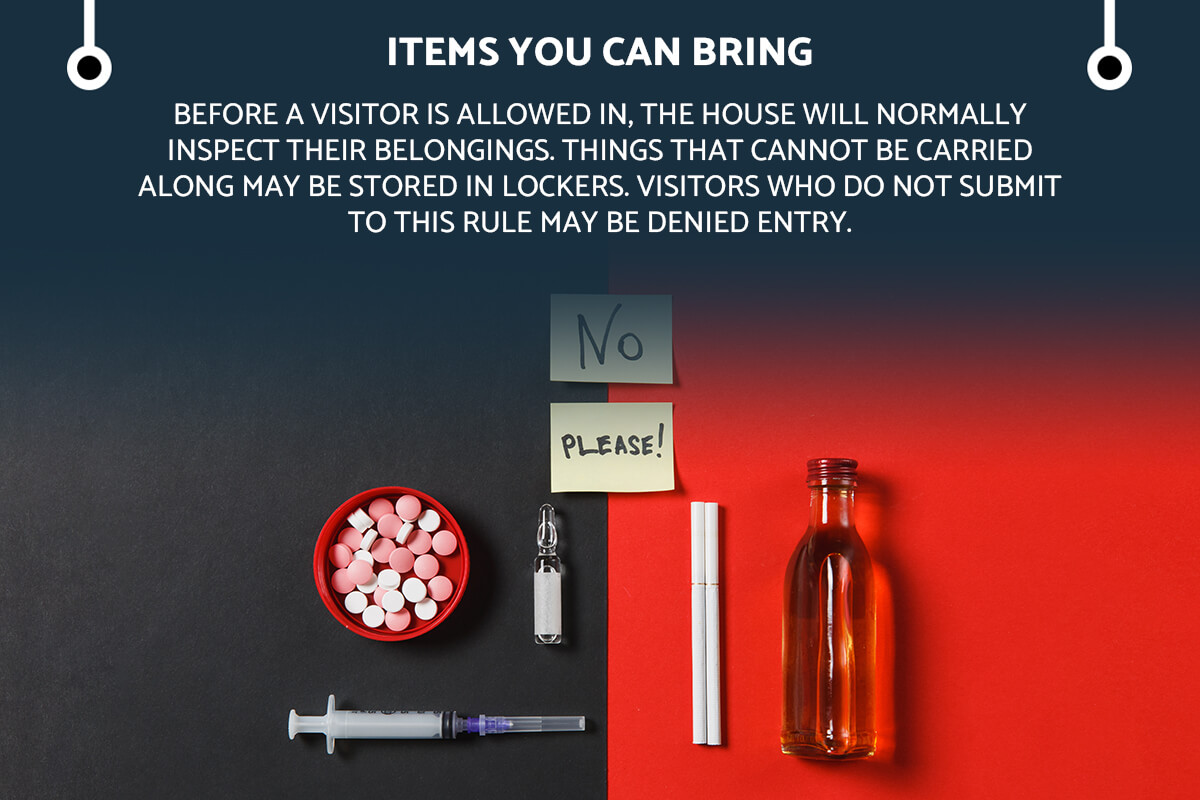
Visitation at a halfway house is subject to strict rules that limit the types of objects that may be brought inside the house. Before a visitor is allowed in, the house will normally inspect their belongings. Things that cannot be carried along may be stored in lockers. Visitors who do not submit to this rule may be denied entry.
Visitors are not permitted to bring in any potentially harmful items, including firearms, other weapons, aerosols, chemicals, or illegal substances, at any halfway house. Visitors are also not allowed to bring large backpacks for security reasons because they may contain prohibited items that may be concealed.
Additionally, to support residents in their recovery, including those overcoming various types of addiction (like alcohol addiction, pornographic addiction), halfway houses also do not allow residents to accept gifts like alcoholic beverages, cigarette products, electronic devices, and pornographic items.
For more information on what cannot be delivered to residents during visits, contact the halfway house.
Dress code
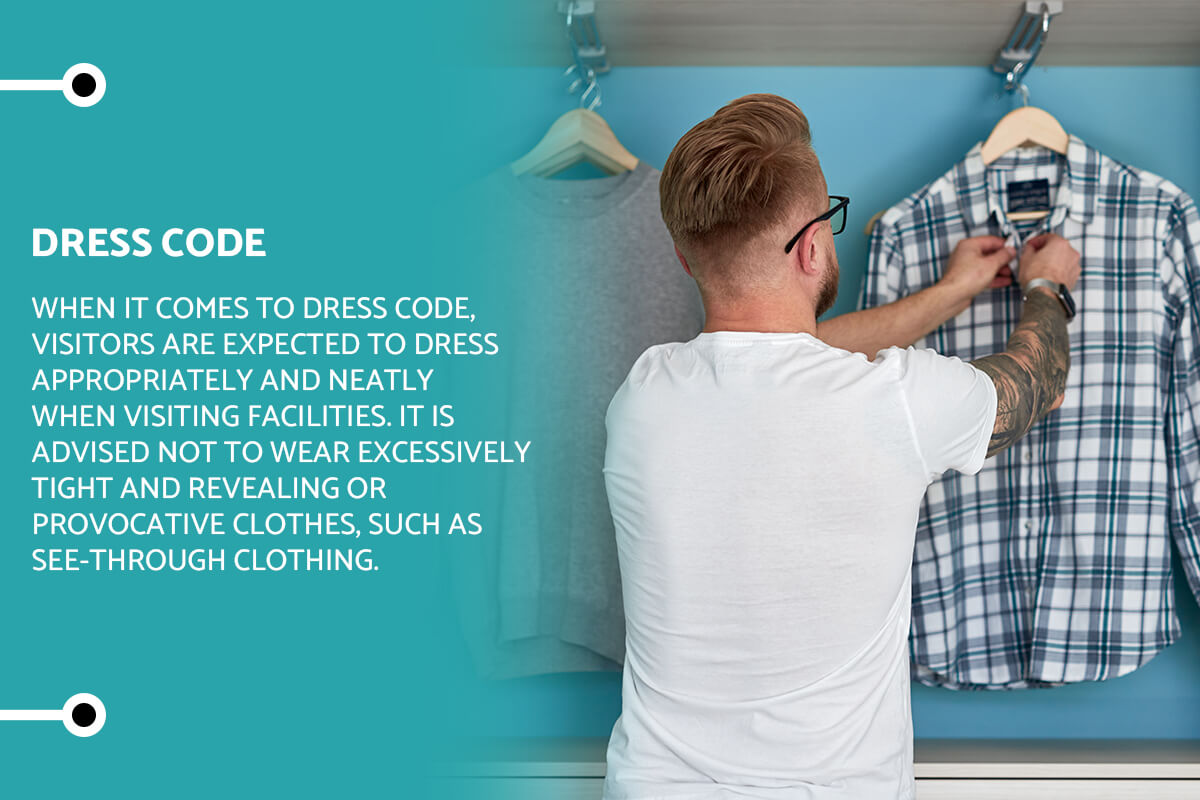
Visiting policies at halfway houses are developed in accordance with local regulations. When it comes to dress code, visitors are expected to dress appropriately and neatly when visiting facilities. It is advised not to wear excessively tight and revealing or provocative clothes, such as see-through clothing. Items of clothing that may reveal underwear or other private areas are strictly forbidden. Skirts and shorts with the hem above the mid-knee are also not allowed in most halfway houses.
Moreover, apparel that promotes offensive, sexually-oriented, racist, illegal, or narcotic activity messages are not allowed inside the halfway house. This includes clothing that depicts a message in either text or art that could influence the safety and security of the residents and the facility.
In addition, maintaining a clean personal appearance is required. Visitors who refuse to follow the dress code will not be allowed entry. Before making plans to visit a loved one, confirming this information with the staff is a good idea since halfway houses have different rules.
Video Visit

In several halfway houses, visitors can have video visits with the residents using their own mobile devices or computers. By doing so, visitors can avoid traffic and save time and money. This is also beneficial for family members or peers who live abroad. Children can also communicate with the resident without having to go to the facility physically. However, some halfway houses do not allow minors to conduct video visits.
To utilize this service, visitors must first schedule the video visit with the halfway house staff and have it approved. The staff will notify you when you have been given the green light to visit a loved one via video chat. Should there be technical difficulties or connection issues during the video visit, visitors may notify the staff so they can consider extending their time slot.
During a video visit, no unlawful or inappropriate content shall be displayed. These include nudity, pornography, drug use, violence, weapons, general gang activities, and clothes depicting these illustrations.
It is important to note that recording or sharing the video is restricted in order to maintain confidentiality and security. In the event of a breach of these guidelines, visitation may be terminated.
Federal Halfway Houses

Halfway houses may be run by charitable organizations, private mental health clinics, or government agencies at the federal level. Other names of halfway houses include halfway house placement, correctional facilities, and Residential Reentry Centers (RRC).
Federal halfway houses are designed to help low-risk and high-risk criminals nearing the end of their prison sentences readjust to society. They facilitate residents’ re-entry into the workforce and foster healthy relationships with their families and communities.
The rules of a federal halfway house are similar to those of other types of halfway houses. The residents at federal halfway houses are often expected to participate in various programs involving treatment, education, and employment. In addition to this, they are expected to stay sober and are subject to random drug testing, restrictions on curfew hours, and other programs. Federal halfway houses make it possible for residents to get the medical and mental health care they need. The goal is to make it easier for the residents to continue receiving necessary medical and mental health treatment, especially for those in early recovery who experience withdrawal symptoms.
In federal halfway houses, visitors are not allowed inside. Instead, visitors could go to one of the designated areas. Visiting hours at federal halfway houses are usually between 9 AM and 5 PM from Monday through Friday and longer on the weekends. Visitors are also prohibited from bringing alcoholic beverages, illegal substances, or weapons.
Halfway House Phone Rules
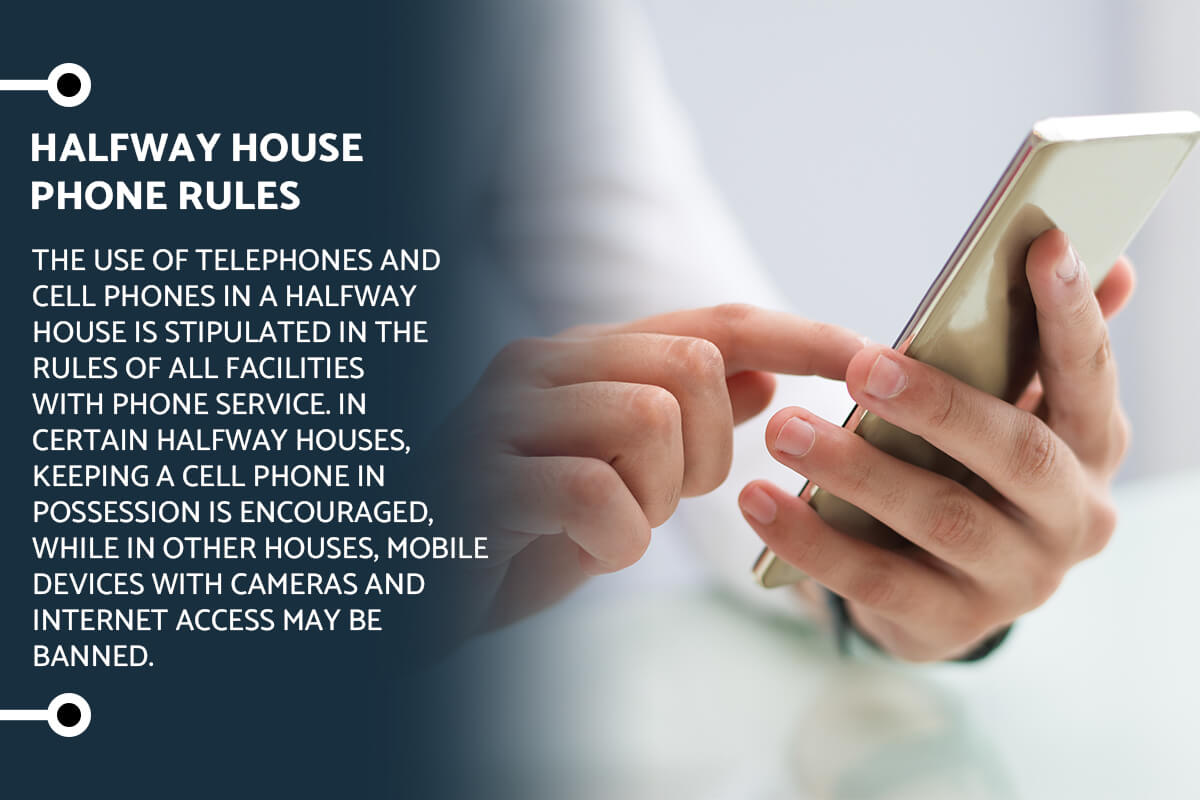
The use of telephones and cell phones in a halfway house is stipulated in the rules of all facilities with phone service. In certain halfway houses, keeping a cell phone in possession is encouraged, while in other houses, mobile devices with cameras and internet access may be banned. If a facility has a no-cellphone policy, residents will have to leave their cell phones with the management and get them back only when they move out.
Meanwhile, there are halfway houses that permit cell phones during the day. However, these phones are taken away every night and are not returned until the beginning of the next day. These rules are established for security reasons, ensuring the safety of all residents and preventing them from being exposed to potential triggers associated with cell phone use.
In halfway houses that permit telephone or cellphone use, residents must adhere to the following guidelines:
The duration of phone calls must be strictly regulated
The volume of phone calls must be kept to a minimum
Cell phones are not allowed during group or individual lessons
In the event of a breach of these policies, the cell phone may be taken away
A communal phone for residents may be provided in halfway houses where cell phones are prohibited. However, residents may be asked to limit the number of calls they make.
Violations
Every halfway house operates under rigorous guidelines. To help residents learn discipline and accountability, those who violate rules may face consequences. Some of the most significant violations that can occur in a halfway house include the following:
A refusal to help with household chores – Daily checks are carried out on all activities. If a resident violates this rule, a warning may be issued.
Absence from recovery meetings or treatment sessions – Residents who miss recovery meetings or scheduled therapy may receive a warning.
Use, or possession of drugs or alcohol – Violating this rule may result in instant ejection from the halfway house without any warning.
Theft or damage to another resident’s property – Warnings will be issued to residents in the event of this violation. Repeated infractions will result in the resident being kicked out of the halfway house.
Causing disruptions to group sessions conducted – Residents may be warned and asked to leave if they repeatedly disturb treatment sessions.
Smoking in non-designated areas – Smoking in inappropriate places may result in disciplinary action and dismissal.
Physical violence and abuse – Abuse or aggression of any kind will result in the immediate expulsion of the resident and possible legal charges.
If you have more questions about a certain policy or how halfway houses work, you may get in touch with the halfway house. The staff at the halfway house will be able to answer any inquiries you may have. They will be able to walk you through the admissions process for the halfway house and explain why certain policies are in place.
What is the Longest You Can Stay at a Halfway House?
The usual length of stay at a regular halfway house is between 3 and 12 months, with 12 months being the absolute maximum for residents. Federal halfway houses have no time limit on how long residents can stay after being released from prison.
What is the Goal of Halfway Houses?
Halfway houses provide a safe and supportive setting for those in early recovery from drug or alcohol addiction. The program assists individuals in transitioning from incarceration to reintegration into society by providing them with accommodation throughout the transitional period. In contrast to rehabilitation facilities, halfway houses offer residents structure and support but do not provide ongoing substance abuse treatment. Instead, these facilities refer residents to contracted treatment providers.
Typically, residents of halfway houses may be expected to fulfill house requirements by attending an outpatient treatment program, such as group therapy or 12-step program meetings.
In a halfway house, residents learn to rely on one another and take accountability for their actions. This leads them to start a new and healthier phase of life.
What are the Features of a Halfway House?
Most halfway houses have a staff member living on the premises. Some houses may provide clinical services like grief counseling, others may employ social workers or mental health professionals. Depending on the halfway house, a facility’s personnel may consist of house managers, licensed medical and mental health specialists, or peer support.
The living conditions and the number of residents vary in every facility. While some accommodations provide bedrooms that two or three people can share, others provide larger rooms that are furnished with bunk beds to accommodate more residents.
Staff members work with residents in utilizing various programs and strategies, such as connecting them to therapy or peer support groups such as Narcotics Anonymous (NA) and Alcoholics Anonymous (AA) or giving on-site life skills training. Staff may assist residents in getting a steady job through a network of local employers, private companies, local job fairs, and training seminars in resume writing and interview techniques.
Residents may need to work or volunteer while they are living in a halfway house. In some halfway houses, residents may attend job fairs and work outside of the house by traveling via public transportation to fulfill their necessary financial responsibilities. However, residents’ time may be structured in other halfway houses to include several mandatory activities, making participation in work and volunteer jobs difficult.
What is the Professional Term for Halfway House?
The Administrative Office of the U.S. Courts refers to halfway houses as Residential Reentry Centers (RRC), which are managed by the Federal Bureau of Prisons. Residential Reentry Centers provide individuals with home confinement and the necessary resources to improve their lives and reconnect with their communities. They are also able to provide assistance to the pretrial services officer and probation officer in the monitoring of a person’s actions to increase compliance and decrease the number of violations before pre-release.
What is the Central Issue of Halfway Houses?
The lack of state oversight of a halfway house has become an issue in recent years. This has resulted in several escapes in addition to other common problems, such as drug use, gang activity, and violence. In a halfway house in New Jersey, around 5,100 convicts have escaped the state’s privately operated facility since 2005. With this report, the federal government has been working on improving its oversight mechanisms and comprehensive adjustments to keep residents safe.
What is a Halfway Home Summary?
A halfway house is a type of transitional housing that provides a positive environment for recovering individuals to maintain their sobriety. It offers a structured and supportive environment for persons who have left rehab, penal or correctional facility, or the streets as homeless persons to continue their journey toward recovery. The court frequently orders high-risk offenders to stay in a federal halfway house to rehabilitate and prepare them for effective reintegration into society.




